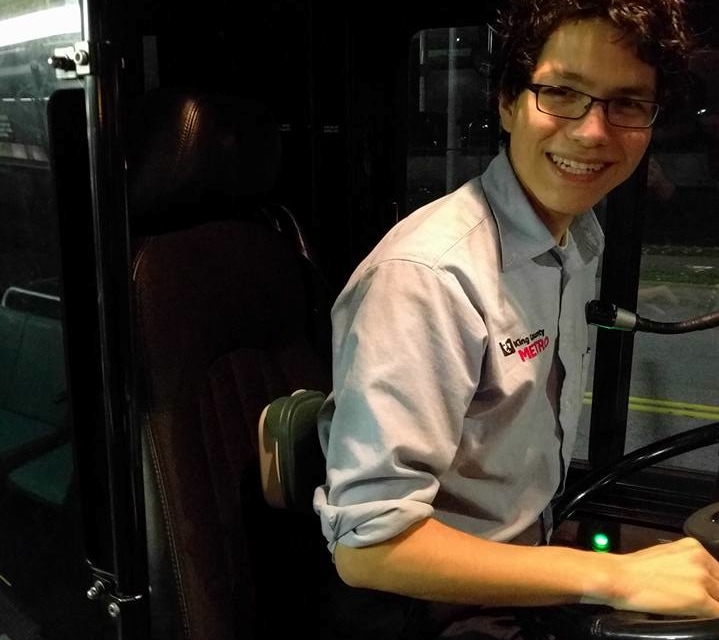|
Look at that bus driver, you might think to yourself. He's just sitting there, driving. I do that all the time in my car. How hard could it be?
The answer is, it can be excruciating. Driving may not seem physically exhausting, but consider the feeling of taking an eight-hour road trip every day, except using an industrial vehicle with a steering wheel the size of a laundry spinner, that's logged not thirty or fifty thousand miles but a several hundred thousand. Oddly, the activity I feel it most compares to is treading water: you may want to rest, but you can't. You have to keep going. I used to ride a certain bus in every day and noticed how rude the driver was with the passengers. Specifically, how short he was with them. Brusque. It's his ship, I guess. I noticed it, until I one day noticed its absence in his attitude. He was downright chipper. It was the same guy, but… what had changed? In chatting with him I discovered he had at long last gotten what he'd been wanting for so many years: back surgery. It was like night and day, he said. He wasn't in continuous stabbing pain for eight hours a day anymore. The discs in his spine were finally fine, and he could smile with the folks and go back to being how he probably always was before all this started. Come this July I'll have driven Metro buses for ten years. When I started, King County had fitness experts who would talk to operators and give them specialized advice on how to set up their seats and so on. Those ladies are long gone, and although operators have always talked about torn rotator cuffs, herniated discs, and knee surgery, they do so more now. I'm no authority and the suggestions below are unscientific, but they do come on the heels of a decade of experience. This is what has worked for me. You can't have a good time at this job if you're in pain. These are a few tips I've picked up along the way from various professionals that you, fellow bus driver, commercial vehicle operator, fellow office or other sedentary job-possessing friend, might find useful. I owe much of my happiness to those who have taught me the information below, and the least I can do is pass it along. For suggestions regarding customer service, click here. On the Coach During operations Setting up the seat:
Regarding steering:
Regarding the back:
Regarding the legs:
When lifting items, do so with your legs, not your back. This will sound meaninglessly zen, but you operators will understand: Let the bus drive itself. Just guide it along. The easiest way to do this is by relaxing your pace. You'll notice you can put much less pressure into all your movements than you think, and the cumulative positive impact this has on your body is noticeable. On a break
Regarding the rotator cuff: Three stretches of use. You can do them all within one minute, and it'll change the next hour.
At Home Regarding the legs:
Regarding the back:
Overall:
Diet:
See you on the road!
2 Comments
Kelly
6/26/2017 05:07:35 pm
I was talking with my sweetie just the other day, pointing out the blood-pressure records I still have from when I was part-time, and drivers would be detailed to go to bases to do that, as well as back-stretching exercises upstairs.
Reply
Nathan
6/27/2017 11:12:42 am
I would seriously have a different body if it hadn't been for those wonderful fitness ladies. One of the worst budget-cutting decisions Metro has ever made– they have to paying more in LNI claims than whatever they were being paid! They'd come out to the coach and give personal evaluations of everything I was doing in terms of setup and movement.
Reply
Leave a Reply. |
Nathan
Archives
April 2024
Categories |

 RSS Feed
RSS Feed
